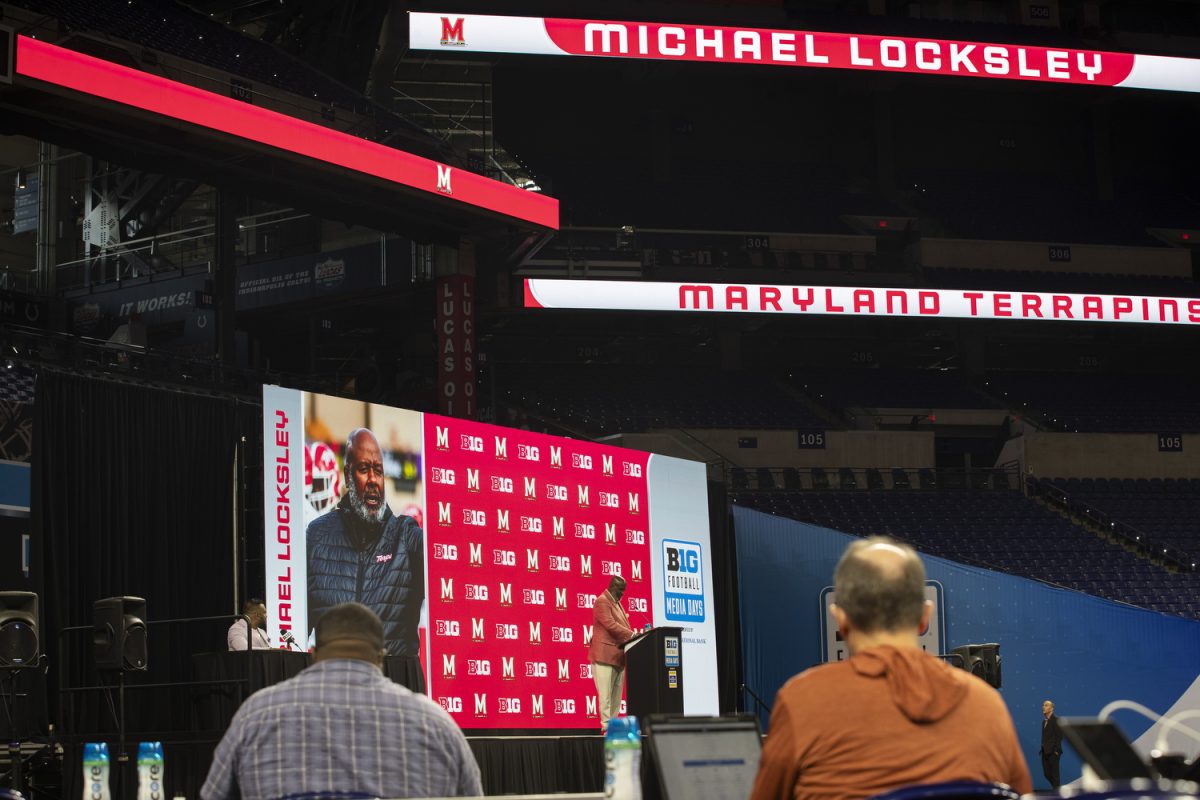For the Iowa women’s swimming team, the Big Ten Championships marks the point in the season in which a swimmer reaches her peak physical condition during the year.
Achieving this peak physical condition is done by a combination of training in and out of the pool.
“Everything that we’re doing in the weight room we are doing with a purpose to be able to transition into the pool,” associate head coach Frannie Malone said. “On Monday mornings we’ll have a weight routine that they do here at the CRWC and they get right in on the power towers, which helps transition that strength into the water for speed and power.”
A power tower is a resistance machine, which uses pulleys, wires, and weights to add resistance to swimmer in the pool. A swimmer wraps a belt around their waist and weights are added to a rack or bucket to increase or decrease resistance.
But all this training isn’t just to gain as much muscle as possible.
“Our main goal is sports performance,” strength and conditioning coach Lindsay Dinkelman said. “It’s not about just the weight room and the pool and it’s not about getting strong as possible, it’s about sports performance.”
Dinkelman analyzes what type of training the team will do by breaking down the movements performed during the sport.
“My approach to training is by giving them all the help I can whatever the qualities of the sport,” Dinkelman said. “Depending on the demands of that sport and what injuries might be more common in that sport. So with swimming, they tend to have a lot of shoulder issues because it’s a cyclic sport, which means they’re repetitively doing the same motion.”
She also works very closely with the coaching staff to plan team workouts.
“We sit down and basically talk and plan out the year together,” Dinkelman said. “We look at the schedule, how long they’re in the water, how many days of the week we’re going to be lifting, and what are the goals of those sessions.”
Not only is training important when it comes to getting in peak physical condition, diet and nutrition are also of importance.
“We have a nutrition program with a registered dietitian on staff,” Dinkelman said, “We have our refueling stations, which are new this year, which have been a huge thing for the student-athletes and it allows them to have access to food more regularly since they have extremely busy lives.”
After a change in NCAA rules that allowed them unlimited snacks and meals, the refueling stations are how the Hawkeyes have adopted to the new ruling.
The combination of professionally planned training and nutrition comes together to provide the swimmer the greatest chance at performing at her best.
The coaches also use a questionnaire to analyze how the swimmers feel.
“It’s a questionnaire that the swimmers receive daily via text,” said Dinkelman, “It asks them seven simple questions based on how the athlete feels both mentally and physically on a scale of one to five, five feeling the best.”
This questionnaire allows the coaches to ask more questions to the swimmers to help them to gauge the overall wellness of the athletes.
If the athlete is overly stressed because of daily commitments — whether it be academics, athletics, or both — the coaches will make an adjustment.
“Sometimes these kids get out of an exam at [11 p.m.] at night then they have to be here at 5:50 a.m., how great is that session going to be?” Dinkleman said. “Maybe they would benefit just from sleeping in. That’s not something we’ll do regularly but when we know it might be an issue then we’ll try to address that.”
How athletes train for swimming has changed greatly from the past. Combining both weight and in pool training is much different than how swimmers use to train.
“Now it’s all integrated,” head coach Marc Long said. “In the older days you would take care of your swimming training in the pool and people weren’t paying much attention to what’s going on outside the pool including strength training.”
Follow @RodEngblom on Twitter for news, updates, and analysis about the Iowa women’s swimming and diving team.






